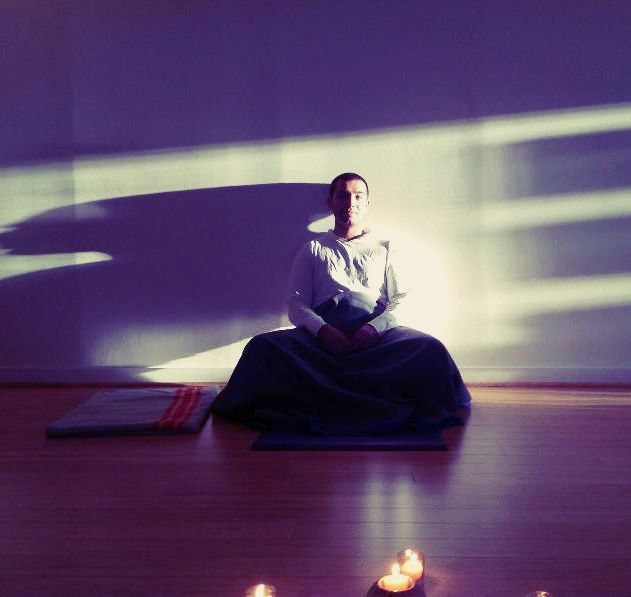
With the hectic pace of the past month, it seemed appropriate to gravitate toward the yin side of life and talk about solitude. As I mentioned in my last post, over this past couple of weeks I have been inundated with people. We had roughly 650 tennis players in this year's tennis event, many of whom I see at the tournament desk and many who I have come to know over the past 14-years. I'd go to set up the tennis desk in the morning, then head to the studio where we're in peak season, meaning many people in and out of classes. In addition, on my birthday, I received a barrage of birthday wishes mainly on Facebook. Needless to say, it felt like a tsunami of incoming energy, loaded with gratitude, good wishes, and much love. It reminded me of how important outward connection to community can be, the forming of relationships that reflect our best qualities back to ourselves.
And it helped to remind me that the balance to that is time alone. It has been said that one of the most powerful things we can learn is to sit alone in a room and to be comfortable with that...no distractions, with nothing to do, teetering on the edge of boredom. Yet, it isn't something that we're taught. Our culture recognizes the extrovert, those who face outward, engage and get stuff done more so than us introverted types whose energy is replenished in solitude and quiet.
When we have time by ourselves is the time we get to know ourselves. Without distraction to tear our attention away from us, we begin to sit face-to-face with what's happening within us. And the more we sit with ourselves, the more we peel away the layers of all the stuff we hold in our unconscious selves.
As part of my morning meditation practice, I often chant a Tibetan Buddhist mantra to the white Tara along with the Gyuto Monks, Deva Premal, and Miten. Deva and Miten were initiated into this mantra by the head monk named, Sona, who spent time in isolation for three years, three months, three weeks, three days, and three hours...twice. They say how they have never met someone so deeply at peace with themselves as Sona. Obviously, renouncing the world and focusing on compassion is deeply profound and resonates a sensibility of ease that we often don't see or meet. And as far as I know, nobody reading this blog post is a renunciate, sitting deeply in practice for extended periods of time.
As Swami Kripalu has said, the spiritual path of the householder is a difficult journey. All of us are engaged in our lives through our community, family, schools, careers, and attempting to make it all flow along as smoothly as possible. To find time to deepen our spiritual seeking takes great discipline and effort as we are naturally drawn away from turning inward.
So my thought of the week is a simple one. When you do find yourself in a time of solitude, notice what you do with it. Do you reach for your phone or tablet? Turn on the TV? Listen to a podcast? Head for the fridge? Do the laundry? Clean the kitchen? You get the picture. By simply noticing where your attention is drawn gives us an opportunity to pause and do nothing. The more frequently we interrupt our pattern, the more moments of solitude and connection we have. To deepen this self-inquiry, meditation and yoga offer us the perfect sacred space in which to truly get to know our deepest and most authentic selves.
I recently had a doctor's appointment and as I sat in the waiting room, I noticed everything that could act as a distraction-a TV was on, magazines were scattered on a table, waiting patients were on their devices, and the reception staff was handling people checking in. It wasn't a peaceful or relaxing environment. When I got taken to the exam room, they were running behind schedule, so I took the opportunity to simply sit and wait. I closed my eyes and relaxed my forehead. I gave these 20 minutes to myself as solitude time. When the energetic physician came into the room, I said to him, "It's really busy in here". He replied, "Yes, it certainly is" and then he did something that resonated with me. He pulled up his stool, sat down lifting his arms, and slowly exhaled as his hands came to his lap. Then he opened his eyes and looked at me, "Now that's better...how can I help?"
The opportunity to release our connection to outward stimuli is present more than we might think. Try it...look for small spaces in your day where you put down your device and become radically present to the moment. Perhaps take a deep breath, close your eyes, and when you open them you might think..."Now that's better!"


No comments:
Post a Comment